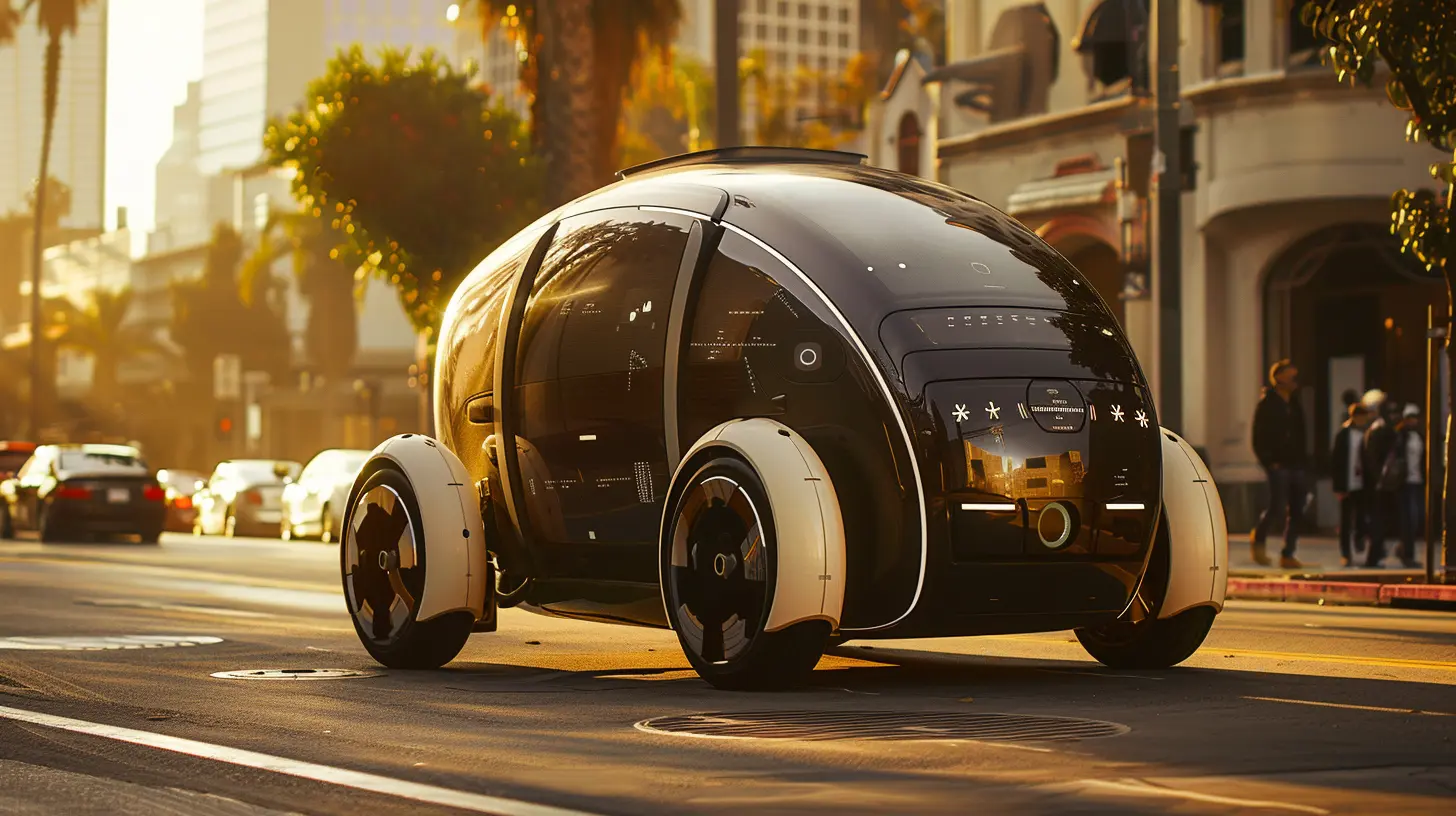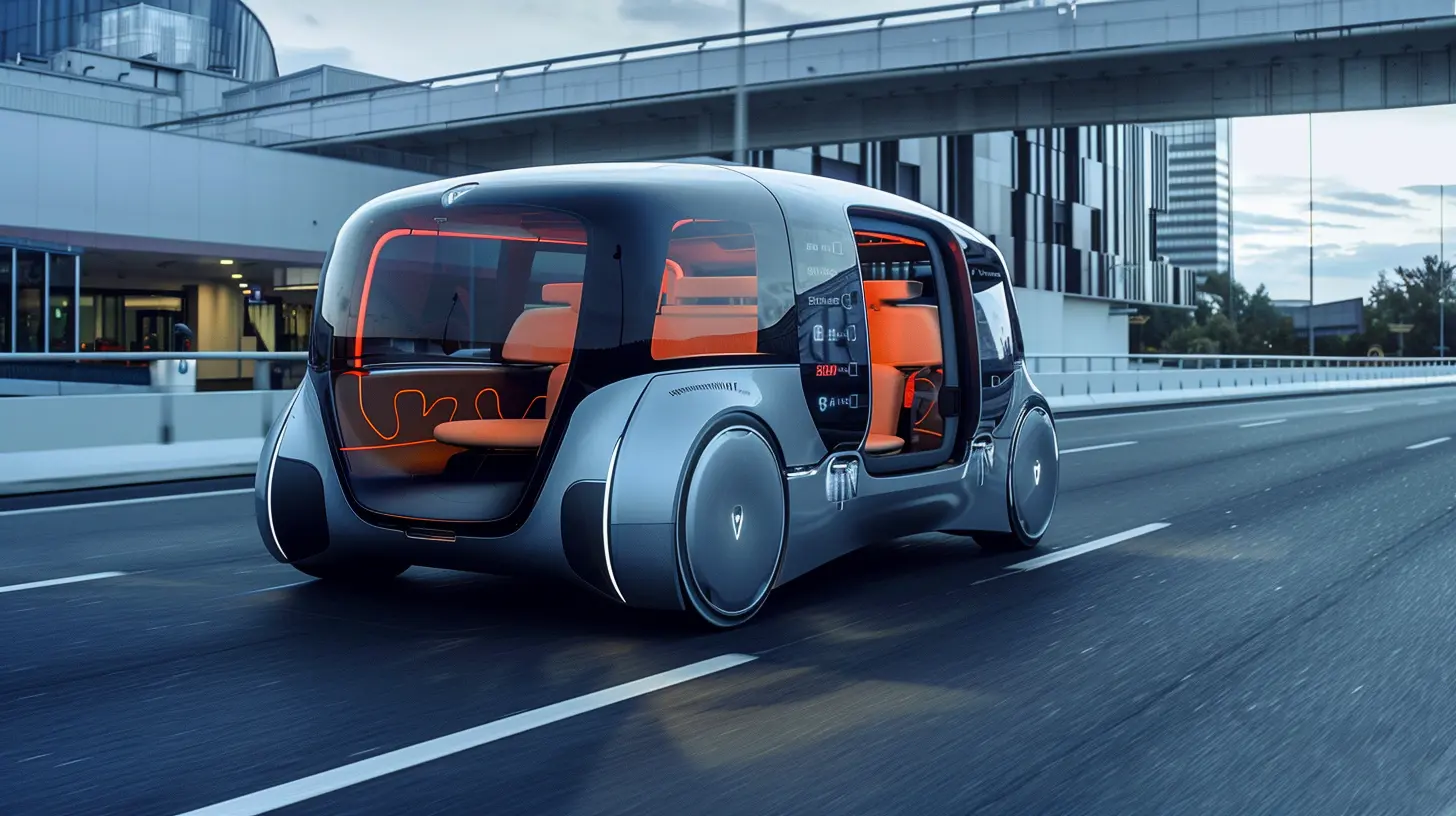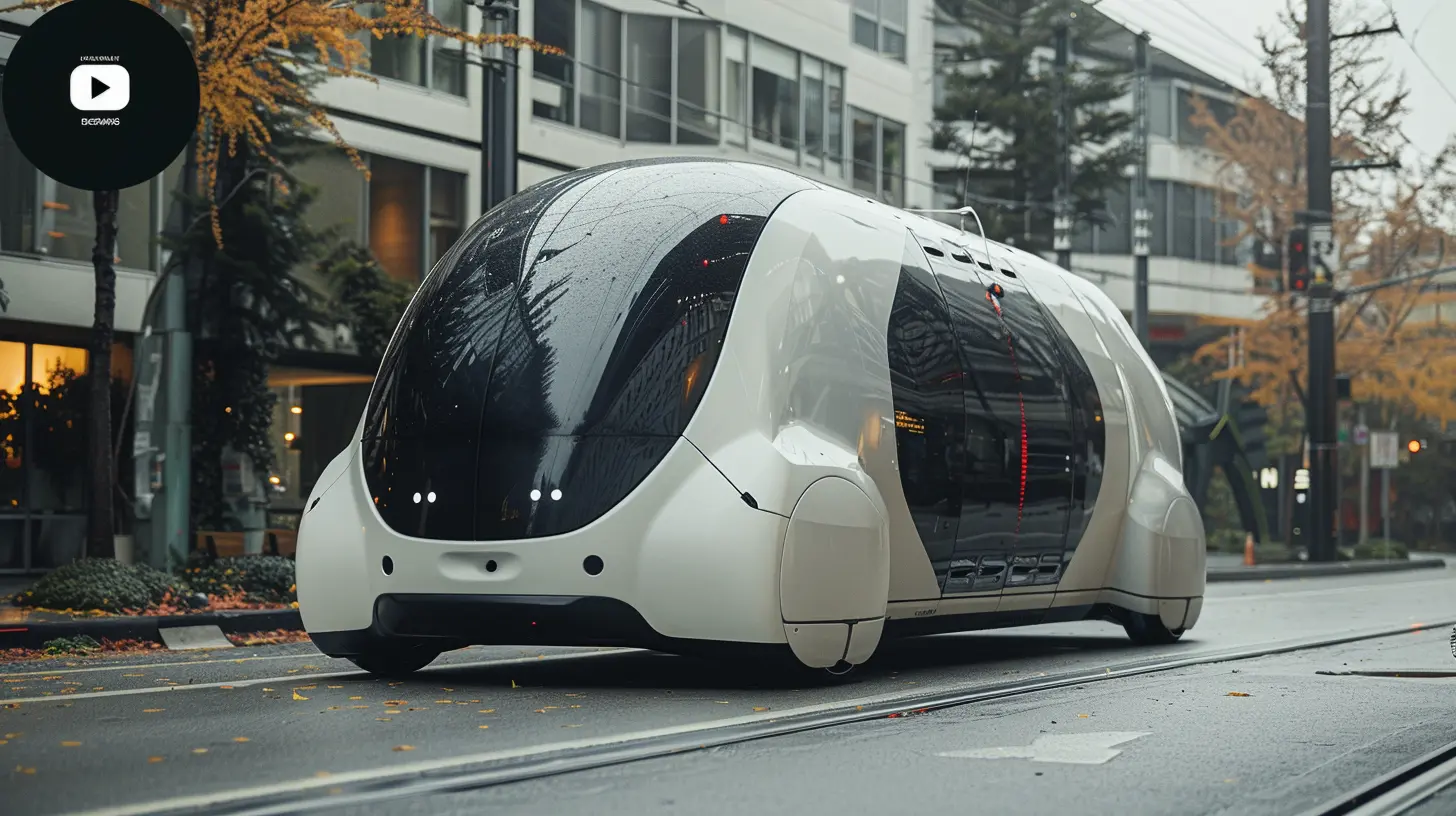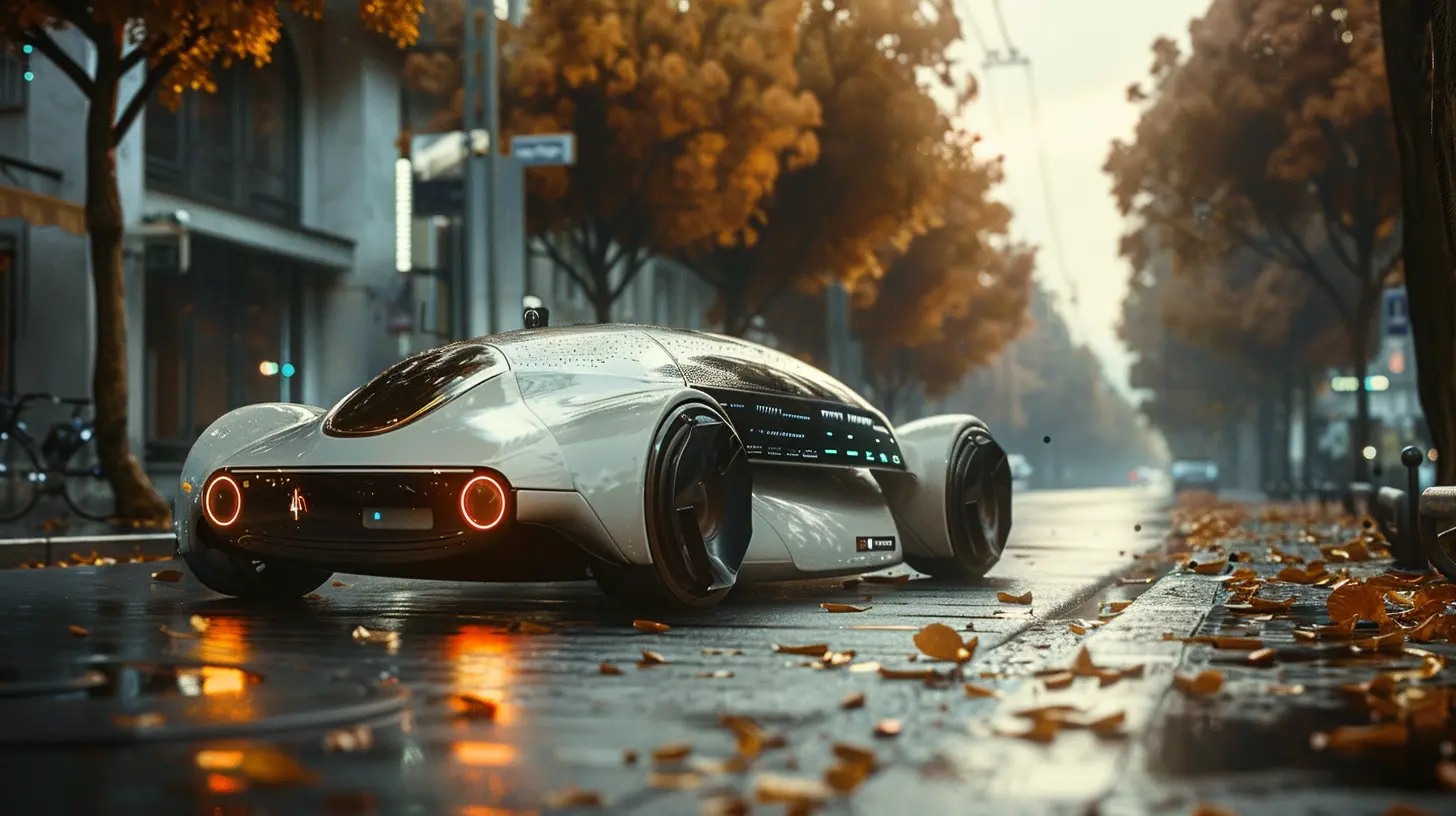Autonomous Vehicles and the Role of Machine Learning
11 August 2025
Let’s face it—autonomous vehicles (AVs) aren’t just sci-fi dreams anymore. They’re speeding toward us like a Tesla on Autopilot. What once seemed like something out of a futuristic film is now rapidly becoming our reality. But here’s the kicker: these self-driving cars don’t just run on wheels and fancy sensors. At the heart of it all is machine learning (ML)—the real MVP behind the wheel.
If you've ever wondered how a car can “think” for itself, make decisions in milliseconds, or even avoid that rogue shopping cart in a parking lot, it’s all thanks to the genius of ML. So buckle up—we're going for a ride into the world of autonomous vehicles and how machine learning is the secret sauce driving their intelligence.
What Are Autonomous Vehicles Anyway?
Autonomous vehicles, often called self-driving cars, are vehicles capable of sensing their environment and operating without human involvement. That means no hands on the wheel, no feet on the pedals, and potentially no driver at all. It's like having your own robotic chauffeur—pretty cool, right?These vehicles use a combination of hardware and software to navigate. Think cameras, radar, LiDAR, GPS, and crazy amounts of code. But the crown jewel in that setup? Machine learning algorithms.
Why Machine Learning is the Brains Behind the Wheel
Let’s break it down: Machine learning is a subset of artificial intelligence (AI) where systems learn from data, improve over time, and make decisions based on patterns. It’s the reason your Spotify knows what you want to listen to next, and it’s the same technology that's making self-driving cars smarter every day.The Learning Process: From Data to Decisions
Imagine teaching a toddler how to recognize a stop sign. You show them a bunch of red octagons, repeat the word “stop,” and after a while, they get it.ML works the same way. Engineers feed these systems millions of images, scenarios, and driving situations. Over time, the vehicle's brain (aka its ML model) starts recognizing patterns and making decisions like a seasoned driver.
And the more it sees, the smarter it gets.
Types of Machine Learning Used in Autonomous Vehicles
Machine learning isn’t a one-size-fits-all deal. There are different flavors, and autonomous vehicles use a mix to function safely and effectively.1. Supervised Learning
Think of this like learning with a tutor. The system is trained on labeled data—images tagged as “pedestrian,” “car,” “stop sign,” and so on. This helps the AV recognize and categorize objects on the road.2. Unsupervised Learning
This one’s more like figuring things out without a teacher. The system digs into data and finds hidden patterns or relationships. It’s great for anomaly detection—like when something unpredictable happens on the road.3. Reinforcement Learning
This method is all about trial and error. The AV makes a decision, gets feedback (reward or penalty), and adjusts accordingly. It’s kind of like teaching a dog tricks—with lots of practice and rewards.Each type plays a crucial role in how autonomous vehicles learn, think, and drive themselves safely.
Real-Life Applications: Where Machine Learning Hits the Road
You might be wondering, “Okay, all this sounds cool, but what does ML actually do in a self-driving car?” Great question!Here’s where machine learning rolls up its sleeves:
1. Object Detection and Recognition
AVs need to know what’s around them. Is that a biker? A mailbox? A toddler chasing a soccer ball?Machine learning helps the vehicle differentiate between obstacles and life-threatening hazards. Cameras and sensors gather data, and ML models analyze it in real-time to label and react accordingly.
2. Path Planning and Navigation
It’s not just about seeing—it’s about deciding where to go. ML enables cars to plot the best route, avoid traffic, adapt to road closures, and even re-route in real time. It’s smarter than your average GPS.3. Behavior Prediction
Humans are unpredictable. One second that pedestrian is waiting on the curb, the next they're jaywalking. ML helps AVs predict what nearby objects (especially people and other vehicles) might do next.4. Adaptive Cruise Control and Lane Keeping
Cruise control is no longer just about keeping a steady speed. ML-powered adaptive cruise control adjusts your speed based on traffic and surrounding vehicles. It also helps stay centered in a lane—even on windy roads.5. Emergency Situations
This one’s a biggie. What happens during a tire blowout or a sudden obstacle? Machine learning allows AVs to make split-second decisions that could save lives. It assesses risk, evaluates options, and picks the one with the least damage—all in real time.Challenges Autonomous Vehicles Face (And How ML Tackles Them)
Sure, all this sounds awesome. But let’s not sugarcoat it—autonomous driving isn’t a walk in the park. It's more like navigating a minefield in a foggy storm.1. Edge Cases
Edge cases are those weird, rare situations that aren't in the training data. Think of a kangaroo hopping across a highway in Australia or a cyclist doing a handstand. ML’s ability to generalize and adapt is crucial for handling these curveballs.2. Changing Environments
Weather, lighting, and road conditions can change in a snap. Snow can cover road markings, rain can blur vision, and fog can mess with sensors. ML models are trained to recognize and adapt to these changing conditions as best they can.3. Ethical Decisions
Ever heard of the trolley problem? Sometimes, AVs have to make moral decisions in no-win situations. While machine learning can't "feel," it can weigh outcomes and minimize harm based on data-driven logic.How Machine Learning is Helping AVs Get Better Every Day
The beauty of machine learning? It never stops improving.Every time an autonomous vehicle hits the road, it’s learning. Fleet learning—where every car shares its new knowledge with the others—means the whole system gets smarter. This is where companies like Tesla and Waymo shine by gathering real-world data 24/7.
As more data pours in, algorithms are retrained, refined, and optimized. It's like leveling up in a video game, constantly learning from missions (or drives) completed.
The Road Ahead: What’s Next for AVs and Machine Learning?
We’re still in the early chapters of the autonomous vehicle story. But the pages are turning faster than ever, and ML is holding the pen.Here’s what’s around the corner:
1. Better Generalization
Future models will be less reliant on specific scenarios and better at handling unknowns. Picture a car that can handle a brand-new city it’s never driven in before—like a seasoned traveler adapting on the fly.2. Integration with Smart Cities
Autonomous vehicles won't just drive—they’ll communicate. With the rise of IoT and 5G, AVs will sync with traffic lights, other vehicles, and infrastructure, all in real time. And machine learning will be the glue making that possible.3. Increased Safety Through Simulation
Instead of learning only through real-world driving (which has risks), AVs can train using advanced simulations. Machine learning will analyze virtual scenarios to prep for anything from falling debris to zombie apocalypses (just in case).Why You Should Be Excited, Not Scared
Yes, change is hard. And yes, the idea of a car driving itself can feel weird. But think about the potential:- Fewer accidents
- Less traffic
- Reduced emissions
- More freedom for those who can’t drive
Machine learning isn’t replacing us—it’s helping us. It’s turning cars into smart, aware systems that can make roads safer for everyone.
And let’s be real for a minute—wouldn’t it be nice to take a nap during your morning commute?
Final Thoughts
Autonomous vehicles and machine learning go together like peanut butter and jelly. One gives the car its body and senses; the other gives it a brain. Without machine learning, self-driving cars are just fancy go-karts.We’re witnessing a revolutionary moment in transportation. As the tech gets smarter and more reliable, AVs will become a big part of our daily lives. And with machine learning behind the wheel, the future is not just near—it’s already turning the corner.
So next time you hear someone say “machine learning,” just picture a car cruising down the highway, thinking for itself, and making the world a little safer—one mile at a time.
all images in this post were generated using AI tools
Category:
Autonomous VehiclesAuthor:

Kira Sanders
Discussion
rate this article
2 comments
Valerie Sullivan
This article effectively highlights the pivotal role of machine learning in enhancing autonomous vehicle technology. By processing vast amounts of data, machine learning algorithms improve safety, navigation, and decision-making. As advancements continue, the potential for smarter, more efficient transportation systems becomes increasingly promising. Exciting times ahead!
December 25, 2025 at 11:40 AM
Sybil Alvarez
Exciting times lie ahead as autonomous vehicles harness the power of machine learning! This technology not only promises safer roads but also revolutionizes our daily commute. Embrace the innovation, as it drives us towards a smarter, more efficient future. Let’s stay curious and optimistic about the journey ahead!
August 15, 2025 at 3:24 AM

Kira Sanders
Thank you for your encouraging words! We share your excitement about the potential of autonomous vehicles and machine learning to transform our transportation system for the better. Let's embrace this journey together!


